 Last Updated February 9, 2025
Last Updated February 9, 2025
The most common Vitamix shopper’s question is some variant of, “I want to make smoothies, soups, and frozen desserts. Which Vitamix blender is best for me?” The answer is that all Vitamix machines work great for those tasks; which one is best depends on the volumes you want to blend and whether you want to pay for extra features.
If you don’t want to go through the nitty-gritty, here are my quick Vitamix recommendations:
Which is the best Vitamix model?
Best Value
- E310 (short/narrow container for small to medium amounts)
- Recon 5200 (tall/narrow container for small to large amounts)
- Recon E320 (short/wide container for medium to large amounts)
Money Is No Object
- Ascent X5 (latest and greatest)
The February 2025 shopping landscape
Most Vitamix models are on sale through Feb 22nd for the President’s Day Sale. Here is the sale.
Vitamix recently released a new set of Ascent models. Full details are in my Vitamix Ascent X Series Review.
The Food Processor Attachment gives more reason to consider Ascent and Venturist models, since it is not compatible with classic models. If you don’t care about the premium finish of the A3500, consider saving big on the Reconditioned Venturist.
If you are looking for the lowest possible price, I recommend choosing between the Recon 5200, the E310, and the Recon E320. The most significant difference between these models is the container they come with, so use the following Venn diagram to pick the optimal container for you. There are trade-offs between the three container options. To put it briefly, “short, narrow, or large capacity: pick 2”: 
Note to visitors from outside the United States: The model availability described on this page is for the USA (and APO/FPO addresses). If you are shopping from Canada, check out my page about Canadian Vitamix models.
For most people, I recommend choosing from the following four categories: Certified Reconditioned models, Explorian, Premium Classic, and Ascent.
Reconditioned
 If you are looking for the lowest possible price on Vitamix, reconditioned is for you. Some people are hesitant to buy reconditioned, and that is a valid concern with some companies, but Vitamix’s reconditioned units are guaranteed to be top quality. The only reasons I would avoid reconditioned Vitamix are if it is for a gift for someone who won’t understand, or if you want some of the features not available on reconditioned machines.
If you are looking for the lowest possible price on Vitamix, reconditioned is for you. Some people are hesitant to buy reconditioned, and that is a valid concern with some companies, but Vitamix’s reconditioned units are guaranteed to be top quality. The only reasons I would avoid reconditioned Vitamix are if it is for a gift for someone who won’t understand, or if you want some of the features not available on reconditioned machines.
Explorian
 If you prefer a slightly smaller container, I highly recommend the new E310, which comes with a short and narrow 48-oz container (full review). The Explorian E320 is functionally identical to the E310, but it comes with a wide container. That makes it nearly identical to the 5300. (The E320 replaces the 5300 in the model lineup, and it is mostly the same, with a few changes: it does not have the on-off switch on the side, and it does not light up when on. I don’t think these differences matter much, but there they are for anyone wondering about E320 vs. 5300.)
If you prefer a slightly smaller container, I highly recommend the new E310, which comes with a short and narrow 48-oz container (full review). The Explorian E320 is functionally identical to the E310, but it comes with a wide container. That makes it nearly identical to the 5300. (The E320 replaces the 5300 in the model lineup, and it is mostly the same, with a few changes: it does not have the on-off switch on the side, and it does not light up when on. I don’t think these differences matter much, but there they are for anyone wondering about E320 vs. 5300.)
There is now also an Explorian E520, which comes with the wide 64-oz container and adds 3 preset blending modes. With the hidden discount that gets activated after clicking a Vitamix link on this site and then adding the Recon E520 to your shopping cart, it is an excellent deal.
Premium Classic and Propel
If you want the most premium machine, but don’t want the new technology of Ascent, then the Professional Series 750 is for you. I think the Ascent machines are quite nice, but you might not like the look of their digital display, or you might want to be able to use older containers (without NFC chips).
In 2023 Vitamix released a new Series, which they are calling the Propel. Similar to the Pro 750, these machines have preset modes and a secondary on-off switch. The Propel machines also have the subtly updated styling that was released with the Explorian series: Propel 510 and Propel 750.
Ascent (Smart System Blenders)
If you want to buy into the future of Vitamix, the Ascent Series is the way to go. It’s priced in the same range as new Legacy models, but it comes with various upgrades (among them: longer warranty, timer display, can use small cups without bulky adapter, and a wireless connection to smartphone app).

 Within the Ascent Series, the A2300 is the lowest-priced model and it has everything you need. (If you’re buying reconditioned, the A2500 is the lowest-priced model, and it has all the features of the A2300, including full variable speed control, and it adds 3 preset program modes.) If you feel like upgrading, I recommend going all the way up to the A3500, because it has premium finish options. (I’m not saying that the intermediate Ascent models are a bad choice, they just wouldn’t be my choice.) See my Ascent review page for more details.
Within the Ascent Series, the A2300 is the lowest-priced model and it has everything you need. (If you’re buying reconditioned, the A2500 is the lowest-priced model, and it has all the features of the A2300, including full variable speed control, and it adds 3 preset program modes.) If you feel like upgrading, I recommend going all the way up to the A3500, because it has premium finish options. (I’m not saying that the intermediate Ascent models are a bad choice, they just wouldn’t be my choice.) See my Ascent review page for more details.
If you’ve been putting off getting a Vitamix because you’re saving up, you can get one right away with a payment plan. If you make on-time payments, there are zero financing fees.
You can leave a comment below or contact me if you are still having trouble deciding which one to get.
Comparison of pre-Ascent models follows
If you want to quickly see the relation between all of the different Vitamix models, you can jump ahead to my comparison chart.
I made an interactive tool to help explore the different features. Try playing with it to get a sense of which you are interested in. You can click any model to go to its Vitamix.com page, or you can read more about the different models below.
+ Show model selection tool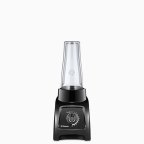 Recon S30
Recon S30  Recon 2-Speed
Recon 2-Speed  Recon 5200
Recon 5200  Recon 5300
Recon 5300  Recon Pro 500
Recon Pro 500 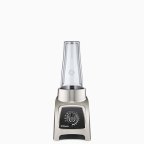 Recon S55
Recon S55  S30
S30  2-Speed
2-Speed 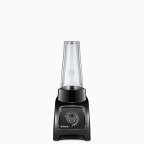 S50
S50  Recon 7500
Recon 7500  5200
5200  S55
S55 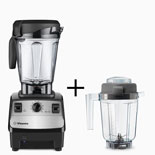 Recon 5300 + 32oz
Recon 5300 + 32oz  Recon Pro 750
Recon Pro 750  7500
7500  Pro 500
Pro 500  Recon 7500 + 32oz
Recon 7500 + 32oz  Pro 750
Pro 750 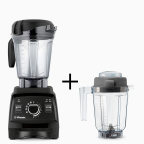 Recon Pro750+32oz
Recon Pro750+32oz  7500 + 32oz
7500 + 32oz  Pro 750 + 32oz
Pro 750 + 32oz  780
780 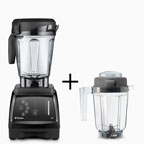 780 + 32oz
780 + 32oz(If you want the 32-oz container, you have to add it to your cart separately: 32-oz container link)
If you’re overwhelmed by the choices and just want to know my preference, I’ve used all of the different types of Vitamix blenders, and before I started using Ascent, the one I used on a daily basis was the 7500, with an extra 32-oz container for blending smaller amounts. (For the best deal, check out certified reconditioned.) All of the models are excellent, and I don’t think there is a wrong choice. (Plus, if you change your mind in the first 30 days, you can get a full refund, including free shipping both ways.)
Summary of Differences
These are the five key decisions to make when deciding which Vitamix to buy:
The following comparison chart shows the relations between the different machines in the S-Series, C-Series, and G-Series. The machines within most boxes of the chart are identical, but they come with different accessories and cookbooks (the exceptions are the S50 and S55, where the S55 has 2 more presets than the S50, and the Pro 750 and Vitamix 780, where the 780 has a flat touchpanel control). Generally the differences in accessories/cookbooks are pretty marginal, so I’d recommend going for the lowest price model within the box.

(“+” indicates there are also more expensive options in addition to the price listed in the chart. The following machines are not shown because they do not fit in with the rest: the Vitamix Turboblend Two Speed and Three Speed lack variable speed control, and the Vitamix 5300 and 6500 are a hybrid of the 6300 and 7500—i.e. they have a 7500 container on a 6300 base, without or with presets.)
Personal Blender? (S-Series vs. C-Series and G-Series)
(Vitamix S30 and S55 vs. 5200, 7500, et al.)
 In 2014 Vitamix released the Vitamix S30. It is smaller than the other Vitamix models, and also comes with a combination blending container/to-go smoothie cup. The Vitamix S50 and Vitamix S55 came out in 2015, and they are the same as the S30 but add preset modes. Since these models are significantly different from all the other models, I put up a detailed Vitamix S30 and S-Series review. If you are considering a smaller blender, or like the idea of blending in a to-go smoothie cup, you should check them out. Not surprisingly, the S-Series’ smaller size means that their maximum capacity is lower the other models (40 oz vs 64 oz).
In 2014 Vitamix released the Vitamix S30. It is smaller than the other Vitamix models, and also comes with a combination blending container/to-go smoothie cup. The Vitamix S50 and Vitamix S55 came out in 2015, and they are the same as the S30 but add preset modes. Since these models are significantly different from all the other models, I put up a detailed Vitamix S30 and S-Series review. If you are considering a smaller blender, or like the idea of blending in a to-go smoothie cup, you should check them out. Not surprisingly, the S-Series’ smaller size means that their maximum capacity is lower the other models (40 oz vs 64 oz).
Variable Speed?
(Vitamix Two Speed vs. 5200 and Vitamix 6000 vs. 6300)
 The variable speed control found on all Vitamix machines except for the Two Speed and 6000 is useful for when you don’t want to fully liquefy your blend. Examples are pesto, salsa, or chopping vegetables. If you don’t have variable speed, you can get away with quickly pulsing, but you won’t have quite as much control. The variable speed also makes the “bubble removal trick” more effective, although pulsing on low speed also works.
The variable speed control found on all Vitamix machines except for the Two Speed and 6000 is useful for when you don’t want to fully liquefy your blend. Examples are pesto, salsa, or chopping vegetables. If you don’t have variable speed, you can get away with quickly pulsing, but you won’t have quite as much control. The variable speed also makes the “bubble removal trick” more effective, although pulsing on low speed also works.
Preset Programs?
(Vitamix Two Speed vs. 6000, Vitamix 5200 vs. 6300, Vitamix Professional Series 200 vs. Professional Series 500, Vitamix S30 vs. S55, and Vitamix Professional Series 300 vs. Professional Series 750)
 The preset programs on the 6000, 6300/Pro 500, S55, and Pro 750 allow you to select a program, turn it on, and then the machine will automatically ramp up the speed and then shut off after a certain amount of time. There are a number of reasons that people appreciate this function:
The preset programs on the 6000, 6300/Pro 500, S55, and Pro 750 allow you to select a program, turn it on, and then the machine will automatically ramp up the speed and then shut off after a certain amount of time. There are a number of reasons that people appreciate this function:
• You can start the machine and “walk away” to do something else.
• If you strictly follow recipes the presets can yield more consistent results.
• Presets can give new users more confidence with the machine.
However, the presets do not work perfectly every time. Sometimes ingredients require tamping to start circulating past the blades, so you can’t always “walk away.” Also, the preset time might not be the optimum blending time if you modify a recipe. You may find that your smoothie is not fully blended after the smoothie program runs, so you have to run it again. A commercial coffee or smoothie shop makes the same recipes over and over, so in that setting presets are extremely useful. If you constantly make new combinations and of differing amounts, as many home users do, the settings may be less useful. It’s not too hard to tell when something is sufficiently blended, and after a few trials anyone should be able to figure it out. For these reasons, I personally would not pay extra for the preset settings. However, I know many people who have the presets love them. One thing to remember is that the machines with presets still have the variable speed knob for full manual control. If you don’t mind the added cost of presets, you can always switch back and forth to manual control.
C-Series vs. G-Series (Next Generation)?
(Vitamix 5200 vs. 7500, and Vitamix Professional Series 500 vs. Professional Series 750)
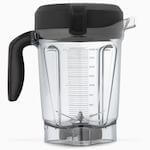 Vitamix released the “Next Generation,” aka “G-Series,” models in 2012. Both the base and the pitcher have an updated design. The base has slightly better sound muffling and also has better airflow which means that it can work harder before it overheats. To go with the better-cooled motor, the updated pitcher has a 4-inch blade instead of the Standard/Classic “C-Series” 3-inch blade. The 4-inch blade is in a shorter and wider container that has the same capacity as the 64-oz C-Series container.
Vitamix released the “Next Generation,” aka “G-Series,” models in 2012. Both the base and the pitcher have an updated design. The base has slightly better sound muffling and also has better airflow which means that it can work harder before it overheats. To go with the better-cooled motor, the updated pitcher has a 4-inch blade instead of the Standard/Classic “C-Series” 3-inch blade. The 4-inch blade is in a shorter and wider container that has the same capacity as the 64-oz C-Series container.
Advantages of the wider design:
• less need for the tamper (ingredients fall into the blades more easily)
• better chopping capability (you can course-chop more ingredients at a time)
• easier to scrape thick mixtures out
Advantage of shorter design:
• easier storage (at 17.5” tall, the container with lid on the base fits under standard kitchen cabinets)
Advantages of the 4-inch blade:
• faster processing time
• under some circumstances, marginally smoother blends
The one disadvantage of the new container is that for small volumes of under ~2 cups it does not work quite as well as the C-Series narrow container. The G-Series wider design causes two things to happen. First, there is more splashing up onto the inside of the lid and upper walls of the container, which means you lose a small amount of your blend unless you carefully scrape off the lid and walls. Second, you need slightly more volume to cover the blades and get good circulation going. The minimum volume to blend depends on what you are blending, and also on how much effort you are willing to spend pushing ingredients back into the blades. For example, for best results, the narrow containers can make nut butter easily by starting with 3 cups of nuts, whereas the wider Next Generation containers do best with 4 cups of nuts. For easier, more liquidy, blends, you can go below 1 cup in either container, but Next Generation containers will splash around more.
This disadvantage is a non-issue if most of your blends are over 2 cups, or if you are willing to spend a bit more to buy an additional narrow container, which will give you the best of both worlds. I like the 32-oz container for this purpose, although the 48-oz container has the same narrow bottom so it works just as well. The 48-oz container is just a bit bulkier on the outside because it sits outside the centering posts instead of inside of them, and its top is wider as well.
(The narrow C-Series Vitamix containers are compatible with G-Series models, but the G-Series containers are not recommended for use on C-Series models. The longer G-Series blades increase the load, and Vitamix does not recommend the C-Series cooling system for those increased loads.)
Reconditioned?
 Buying reconditioned is a great way to save money. For more details on deciding about buying reconditioned, see my refurbished Vitamix page.
Buying reconditioned is a great way to save money. For more details on deciding about buying reconditioned, see my refurbished Vitamix page.
Continue on for more details of each model type…
The array of different Vitamix blenders is a bit confusing, but it turns out that there is a lot of redundancy between the different models. I am only discussing models made for consumer/home use. Their commercial blenders are not ideal for home use because they are generally more expensive and have shorter warranties (3 years vs 7 years for home use; they are warrantied for constant use—think of how many times per day a blender at Jamba Juice runs compared to at your home).
The Vitamix website currently lists over 30 different home models, but they are all variants of three main designs: “personal” (S-Series), “standard/classic” (C-Series), and “next generation” (G-Series). For each of these main designs there are a few different options, to make a total of 8 different machine types. The rest of the models have identical bases, but come with different containers and/or accessories.
S-Series Motors
If the smaller size, dishwasher safe container, and “to-go” blending container appeal to you, please read the full details at my Vitamix S30, S50, and S55 review. For quick reference, the size of the base is 8.3″ deep x 5.9″ wide x 7.7″ tall. With the 20-oz to-go container the total height is 14.55″. The height is 15.66″ with the 40-oz container. These models have lower power, but they are still capable of making all of the usual Vitamix creations, just in smaller quantities.
C-Series Motors (Standard/Classic)
There are three types of bases of the standard variety. The differences are in the controls. The dimensions of the base of these machines are 8.75″ deep x 7.25″ wide x 8.25″ tall. There are three different container size options: 32 oz, 48 oz, and 64 oz, which result in height of base plus container/lid of 16.9″, 17.4″, and 20.5″ respectively.
Standard, no-variable speed (Vitamix TurboBlend Two Speed and Three Speed)
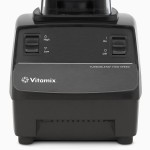 TurboBlend Two Speed (
TurboBlend Two Speed ($399$349); reconditioned for $299. This machine comes with a 5-year warranty and lacks the variable speed knob. Variable speed is useful for cases where you want to have finer control over the texture (i.e. if you don’t want a totally smooth purée). However, you can accomplish some non-liquefying chopping tasks by quickly pulsing the machine. While this is the most affordable new machine, I’d highly recommend looking at the reconditioned 5200, which has the same warranty and adds variable speed for $70 less.
In May 2016 Vitamix came out with a new no-variable speed machine, the TurboBlend Three Speed($499). It is exactly what it sounds like: it has three speed settings: low, medium, and high. It also has a pulse switch, which does the same thing as switching the start-stop button on and off. The pricing on this model is a bit strange, since for $50 less you can get a machine with fully variable speed. Plus, the TurboBlend 3-Speed comes with a 5-year warranty, instead of the 7 years on machines like the 5200.
Standard variable speed (Vitamix 5200 et al.)
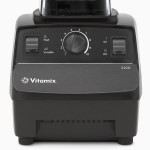 Until recently this was Vitamix’s bread and butter, and they have a lot of models to show for it: 5200 ($449), TurboBlend VS (retired), CIA Pro (retired), Pro 200 ($499), Creations II ($449), and Creations GC (retired); reconditioned for $329. These machines are essentially identical. Some are available with a shorter 48-oz container instead of the 64-oz container. The smaller container is nice because it’s more compact (and fits under standard kitchen cabinets), but of course its capacity is lower. The aesthetics of the switches and dial are slightly different between the different models. The Creations models come with a 5-year warranty, while the rest are 7 years. The 5200 comes with their “whole foods cookbook,” the TurboBlend VS comes with a vegetarian/vegan/raw cookbook and a nutmilk straining bag, the Pro models come with a cookbook with restaurant-oriented recipes (the CIA one—that’s Culinary Institute of America—comes with an additional recipe book). Note that if you buy reconditioned, you cannot choose which of the Standard models you are getting; Vitamix will choose for you based on availability, but remember that functionally they are identical.
Until recently this was Vitamix’s bread and butter, and they have a lot of models to show for it: 5200 ($449), TurboBlend VS (retired), CIA Pro (retired), Pro 200 ($499), Creations II ($449), and Creations GC (retired); reconditioned for $329. These machines are essentially identical. Some are available with a shorter 48-oz container instead of the 64-oz container. The smaller container is nice because it’s more compact (and fits under standard kitchen cabinets), but of course its capacity is lower. The aesthetics of the switches and dial are slightly different between the different models. The Creations models come with a 5-year warranty, while the rest are 7 years. The 5200 comes with their “whole foods cookbook,” the TurboBlend VS comes with a vegetarian/vegan/raw cookbook and a nutmilk straining bag, the Pro models come with a cookbook with restaurant-oriented recipes (the CIA one—that’s Culinary Institute of America—comes with an additional recipe book). Note that if you buy reconditioned, you cannot choose which of the Standard models you are getting; Vitamix will choose for you based on availability, but remember that functionally they are identical.
Sometimes these models are listed with their color-specific SKU. All of the following models are identical to the 5200, they just come with different colors and names: Vitamix 1709, 1363, 1364, 1365, 1709, 1723, 1732. They also sometimes go by VM0103. Vitamix 1978 is also the same, but comes with a 48-oz container.
Standard variable speed + presets (Vitamix 6300 and Professional Series 500)
 Pro 500 ($559) and 6300 (retired); reconditioned for $379. These are the same model; the only difference is that the 6300 comes with the “Savor” cookbook, which has a broader range of recipes than the Pro 500’s “Create” cookbook, which focuses more on restaurant-style recipes that tend to be richer.) They have 3 preset programs that run the blender for a certain amount of time and speed for smoothies, frozen desserts, and hot soups. Their switches are slightly different from the non-preset models. The non-preset models have an on-off switch, a variable speed knob, and a high-variable speed switch. The preset ones have moved the highest speed setting onto the knob and replaced the high-variable speed switch with a pulse switch. This is really a minor aesthetic difference, since you can achieve pulsing on the non-preset models by quickly flicking the on-off switch on and off.
Pro 500 ($559) and 6300 (retired); reconditioned for $379. These are the same model; the only difference is that the 6300 comes with the “Savor” cookbook, which has a broader range of recipes than the Pro 500’s “Create” cookbook, which focuses more on restaurant-style recipes that tend to be richer.) They have 3 preset programs that run the blender for a certain amount of time and speed for smoothies, frozen desserts, and hot soups. Their switches are slightly different from the non-preset models. The non-preset models have an on-off switch, a variable speed knob, and a high-variable speed switch. The preset ones have moved the highest speed setting onto the knob and replaced the high-variable speed switch with a pulse switch. This is really a minor aesthetic difference, since you can achieve pulsing on the non-preset models by quickly flicking the on-off switch on and off.
Some people love the presets because you can set it and walk away (assuming the mixture is circulating and you don’t need the tamper), and because they get more consistent results. However, the more consistent results will only hold if you always add the same quantities and types of items to the blender. For example, if you’re making a small smoothie, you can blend it for less time than if you were making a large one. One other thing is that you can set the non-preset machines and walk away—you just have to come back to stop them. I often use the blending time to rinse off the knife and cutting board that I used. You’re not likely to forget that the Vitamix is running because it’s loud enough to hear throughout the house. The variable speed knob goes to the same high speed as the previous models on high, but it’s lowest setting is a bit faster than on the 5200 et al., so you lose a tiny bit of fine control. Whether the presets are worth it is a personal question—I wouldn’t pay extra for them, but some people love them.
Standard no variable speed + presets (Vitamix 6000)
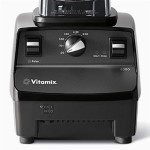 6000 (retired). Released October 2013, this is more of a mash-up of existing machines than a truly new one. It’s a sort of blend between the Two Speed, and the 6300. It does not have variable speed control, but it has six preset timed blending settings. These settings will automatically ramp up the speed, and then turn it off after a specified time of 20 sec, 30 sec, 1 min, 1.5 min, 4.5 min, or 6.5 min. Like the 6300, the pulse control is spring-loaded so that it only stays on as long as you hold it down, and it blends at a medium-low speed.
6000 (retired). Released October 2013, this is more of a mash-up of existing machines than a truly new one. It’s a sort of blend between the Two Speed, and the 6300. It does not have variable speed control, but it has six preset timed blending settings. These settings will automatically ramp up the speed, and then turn it off after a specified time of 20 sec, 30 sec, 1 min, 1.5 min, 4.5 min, or 6.5 min. Like the 6300, the pulse control is spring-loaded so that it only stays on as long as you hold it down, and it blends at a medium-low speed.
G-Series Motors (Next Generation)
In 2012 Vitamix released a new generation G-Series base with improved airflow that makes it run cooler and quieter than the classic C-Series one. With the improved cooling, the G-Series base can use a new pitcher design that is wider and has longer blades. This design makes the tamper less necessary, and makes it easier to get thick mixtures out. The longer blades also process food faster and work better for chopping. The G-Series machines are compatible with the C-Series containers, so if you want to use the dry blade you can use the same classic dry container. Dimensions are 9.4″ deep x 7.7″ wide x 17.5″ tall (with new-style 64-oz container in place). For more details of sizes, check out the PDF footprints I made for my Vitamix S30 review.
Next generation motor (Vitamix 7500, Professional Series 300, and Creations Elite)
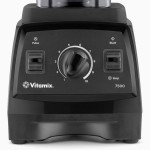 7500 ($529), Creations Elite ($557.50), and Pro 300 ($559); reconditioned for $439. These are all the same machine, so don’t worry about the note on the Reconditioned Next Gen page that says that the label may reflect any of these models. The only difference is the name printed on it. One point of confusion is that the Creations Elite is sold new with a smaller container, but if you happen to get sent a Creations Elite as a Reconditioned Next Gen, it will come with the same low profile 64-oz container that the 7500 comes with.
7500 ($529), Creations Elite ($557.50), and Pro 300 ($559); reconditioned for $439. These are all the same machine, so don’t worry about the note on the Reconditioned Next Gen page that says that the label may reflect any of these models. The only difference is the name printed on it. One point of confusion is that the Creations Elite is sold new with a smaller container, but if you happen to get sent a Creations Elite as a Reconditioned Next Gen, it will come with the same low profile 64-oz container that the 7500 comes with.
Next generation motor + presets (Vitamix Professional Series 750 and Vitamix 780)
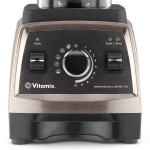
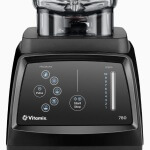 Pro 750 ($599–$649), 780 ($719); available reconditioned: 750 for
Pro 750 ($599–$649), 780 ($719); available reconditioned: 750 for $519–$569$499, and 780 for $519$399. These models have 5 presets: smoothies, frozen desserts, purées, hot soups, and self-washing. If you want to see more details of exactly what the presets do, check out my page about demystifying Vitamix presets. The 780 is identical, except that it has a touchpanel control interface. See my Vitamix 780 review for more details.
Vitamix Heritage 750 vs. Original 750?
In late 2015, Vitamix released a new version of the Pro 750: the Heritage line. The Vitamix Heritage 750 is functionally equivalent to the original Pro 750, but it has two differences on the exterior of the base. The upper shell (see diagram below) is now metal on the Heritage models. The Vitamix website doesn’t put Heritage in the model title, but it’s there in the description.
 The original 750 came in a brushed stainless finish option, but the upper shell was plastic with a thin metallic coat that could be scratched or scuffed. (When I tested the original 750 for a couple of months, I did not see any problems, but I have heard that some people have noticed scratches/scuffs.) The solid metal of the new Heritage models is more durable. Also, the metal shell muffles the the motor a bit more than the plastic, making the Heritage models a bit quieter.
The original 750 came in a brushed stainless finish option, but the upper shell was plastic with a thin metallic coat that could be scratched or scuffed. (When I tested the original 750 for a couple of months, I did not see any problems, but I have heard that some people have noticed scratches/scuffs.) The solid metal of the new Heritage models is more durable. Also, the metal shell muffles the the motor a bit more than the plastic, making the Heritage models a bit quieter.
 The other minor difference is that the Heritage models’ front panel has fewer backlights: Heritage models light up the indicators above the pulse and start-stop switches, whereas the original Pro 750 has backlights around the central knob as well.
The other minor difference is that the Heritage models’ front panel has fewer backlights: Heritage models light up the indicators above the pulse and start-stop switches, whereas the original Pro 750 has backlights around the central knob as well.
The Heritage metal is available in brushed stainless and copper finishes. (Currently on Vitamix.com, the Heritage options are listed on the main Pro 750 page, and the old brushed stainless finish is discontinued.)
I believe it is called Heritage because it is a throwback to the original Vitamix models that had all-metal bases. The plastic that Vitamix has been using for their bases for the past 25 years is extremely durable, so this change won’t affect functional longevity. That said, the elegant finish of the Heritage models will now likely stay unblemished for longer. It’s also nice that Vitamix did not increase the price for this upgrade.
The Vitamix 5300 and 6500
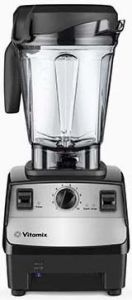 5300 ($529) and 6500 ($599); reconditioned for $360. Vitamix does not currently sell the new models online, only the reconditioned one. These are “new” models for 2015, although they are actually just slightly unexpected mash-ups of previous models. They are a hybrid between a 6300 and a 7500. They use the wide Next Gen (G-Series) container but they have a Classic (C-Series) base. The 5300 has variable speed and a pulse control switch, and has no presets. Meanwhile, the 6500 has the same three presets as the 6300. (Further evidence of equivalence between the 5300/6500 and C-Series models is on the Reconditioned C-Series 6300/Pro 500 page: it says its base may be a 6500.)
5300 ($529) and 6500 ($599); reconditioned for $360. Vitamix does not currently sell the new models online, only the reconditioned one. These are “new” models for 2015, although they are actually just slightly unexpected mash-ups of previous models. They are a hybrid between a 6300 and a 7500. They use the wide Next Gen (G-Series) container but they have a Classic (C-Series) base. The 5300 has variable speed and a pulse control switch, and has no presets. Meanwhile, the 6500 has the same three presets as the 6300. (Further evidence of equivalence between the 5300/6500 and C-Series models is on the Reconditioned C-Series 6300/Pro 500 page: it says its base may be a 6500.)
The reconditioned 5300 is the most affordable option for a machine with the short/wide container.
The strange thing about these models is that previously Vitamix stated that Next Gen containers should not be used on Classic bases because they do not have the updated airflow design that cools the motor more effectively.
I strongly suspect that the 5300 has the same microprocessor speed control as the 7500, Pro 750, and 6300, just without the presets. (You can read about the speed control of the different machines on my Vitamix RPM measurement page.) The microprocessor speed control should help protect the motor when using the wide container at high loads and very low speeds, but at maximum speed it shouldn’t make a difference. The marketing copy for the 5300 says that it comes “with a faster, yet quieter, motor,” but I am skeptical of those claims [Update: interestingly, Vitamix removed that phrase].
The 5300 and 6500 are a bit louder than the G-Series bases, which have sound-dampening technology not present in the C-Series bases. At the same price point, I would prefer the 7500.
Satisfaction Guarantee
Vitamix has a 30-day satisfaction guarantee, so if you have second thoughts you can return a machine within the first 30 days for a full refund and they even pay return shipping.
Warranty
If your machine has any problems during the warranty period of 5 or 7 years, Vitamix will repair or replace it, and they cover shipping costs both ways. For more details about warranties, check out my Vitamix Warranty page.
Reconditioned Vitamix
 I know I already mentioned reconditioned machines, but I want to restate what a great deal I think they are. These factory-refurbished machines offer the best prices you’ll find on Vitamix: 5200 for $329, Pro 500 for $379, and 7500 for $439. For more details, see my refurbished Vitamix page.
I know I already mentioned reconditioned machines, but I want to restate what a great deal I think they are. These factory-refurbished machines offer the best prices you’ll find on Vitamix: 5200 for $329, Pro 500 for $379, and 7500 for $439. For more details, see my refurbished Vitamix page.
Payment Plans
Want to start blending right away, but don’t want to pay the full price up front? Vitamix offers payment plans with zero interest and no fees if you make payments on time. For more information, check out my payment plan page.
Free Shipping
Clicking on any Vitamix link on this page will automatically apply a promotion code, which gives you free shipping on your order of a Vitamix machine (or anything else on Vitamix.com over $50) in the U.S. or Canada. For more details, see my page about the Vitamix promotion code.
Extra Bonus
If you order via a link on this site, Joy of Blending can get a commission. I deeply appreciate your support, and, to thank you, I want to help you get the most out of your new machine. I try to answer all questions from everyone, but sometimes I get swamped. If you order through one of my links, I will give you a private way to contact me so that I can answer your questions before visitors who are not on the special list. Please make sure my link is the last link you click before placing your Vitamix.com order. Then just forward your order confirmation to thanks@joyofblending.com.
Recommended Accessory
I highly recommend a spatula for getting the last bits of thick mixtures out of the container. For the narrow containers I recommend a long narrow spatula. For the wide containers, I recommend Vitamix’s under-blade scraper.
Dry Container
If you’re wondering if you should get a dry container, this new post is for you: Is the dry container worth it?
Phew… so that completes the Vitamix model round-up. I’m looking forward to getting back to describing some actual recipes!
Or follow along on Twitter or Facebook:

What is the CSA pro series?
What model # is compareable?
Great site, although my head hurts with all the different models, blade lengths, containers!!
I’ve never heard of a CSA pro series. There’s the CIA Pro Series mentioned in my post. And a previous commenter mentioned a PSA model, which turned out to be the same as the Pro Series described above.
Where did you come across this CSA model?
Isn’t the CSA the Culinary Snobs of America line? *wink* Seriously, IMO the Create cookbook that comes with the CIA series has recipes that might be interesting to prosumer cooks ( lots of baking/ stovetop cooking involved), but not to the consumer who is seeking some easily prepared creations that mostly use the blender.
What is the maintenance required on the blades? Obviously harder or more fiberous products will dull blades faster but after reading most of the posts this is never discussed. My second question is if I plan on making “smoothies” for on the go in the Am in the morning consisting of steel cut oats, fruit and carrots with yogurt and ice then go for any of the refurb models? Sounds like this would be easy for all models. Only question is about the oats as one thread seemed displeased vs older 500????
The blades do not require maintenance. They are actually not sharp like a kitchen knife, so they don’t really dull (they’re maybe the sharpness of a table knife). I’ve seen a few references online to sharpening them, but I think those references are misinformed. You’d have to blend something really hard to actually mar the blades. I’m not even sure what would do it; possibly some types of spices. Or rocks.
Yes, any of the refurbs would work well for your smoothies. I think the previous comment about oats and the 750 is an isolated case, and I wouldn’t worry about it.
morning:) I am looking to make mainly soups and smoothies from leafy greens , vegies and fruit. Which model would be best for me?
This is a common question, and I’m thinking I should make a post that more simply/clearly describes the buying considerations. In the meantime I’ll try to answer your question.
Any Vitamix model will work well for soups and smoothies.
When choosing a model it’s mainly a matter of balancing various factors of convenience and price.
A few questions to get started with:
1) Do you care about height of the container on the machine? (Some people like to store it under cabinets.)
2) Do you want preset modes? (These will automatically ramp up the speed and then turn it off after a certain amount of time.)
3) What range of volumes of ingredients do you think you will want to blend?
4) Would you value a machine that has less need for using the tamper to manually push ingredients into the blades?
Adam,you could make a nice flowchart diagram with all those questions asked. That would be super cool… just like your website is 🙂
Thanks for the suggestion. I have been thinking about a flowchart. It’s on the to do list!
thank you for such a quick response.
1) no
2) doesn’t matter
3)not sure trying to eat healthier (enough to make a soup for 2 or healthy smoothie for one)
4)the tamper is not necessary : can I turn off the machine and push ingredients down?
also I see Costco has a machine that has a dry cup and wet cup? Vitamix 5200 Super Package. I was so hoping to have one in the next few days
It sounds like a Standard 5200 would be a good option for you.
The dry container is useful if you want to grind spices or flour from whole grains regularly. Since that wasn’t one of your main uses, I would probably hold off on buying the dry container.
Hi Adam — first I want to thank you for having a quality blog (there’s so much nonsense out there) and for your real investment in replying and creating original content.
And now my question.. I’m kinda stumped. So I finally broke out the new (well, refurb) 750; my first concoction was a simple smoothie (OJ, strawberries, banana, protein powder) and it was great — I did let it run for a while but If ound the strawberry seeds were completely crushed – it was entirely smooth; the only slight grittiness came from the PP.
But I freaked out on my second attempt. I was mixing the ingredients for a chocolate treat which I’ve always made with my $20 blender with no issues at all. It consisted of a good amount of coconut oil, raw cacao powder, maple syrup, protein powder again, and almond butter. It looked very nice for a minute so I let it run for another minute at which point the motor emitted a smell and the whole machine just stopped running. It was actually scary. I don’t know if it was the heat that the Vitamix generates, but the dry ingredients balled up and just sat there in a pool of the oil and syrup. It didn’t blend, and it stopped the machine (I thought I broke it but it did start up again the next day). It also looks to me like one of the two straight blades is bent, bending slightly downwards (of the four blades two point upwards which I’m sure is the original orientation, but the other two I think should be straight and now one is bent downwards.) Anyway, I will call the factory but I wonder what you think about this, and should I have used the dry container then? Should I request a replacement? I’m weirded out, and of course my first thought was that it failed because it’s refurbished. I also don’t know how to make it work because as I said I’ve made this recipe with both a cheapo personal blender and also with a hand-held bamix type wand with the whisk attachment. Just in case you have some thoughts, I thought I’d ask. Cheers and have a great day.
I think everything is actually OK. The blades are meant to be like that (1 of the horizontal blades bent slightly down). I remember thinking it was weird when I first noticed it, but then I’ve seen it on other brand new blades, and I think it has something to do with optimizing the blending flow.
Your machine tripped the thermal override because the load increased too much. The thermal override protects the machine from being seriously damaged, so it’s not a problem.
Regarding your concoction, it sounds like you somehow over-mixed it and/or over-heated it. If it worked well in a less powerful blender, my suggestion would be to blend it for less time, or to reduce the speed if you want to blend it for longer. (SIDE NOTE: to anyone who has a classic-style base, you should not blend thick mixtures for extended periods on the low speeds because that will lead to overheating. Actually even on high speed, if you are mixing something thick enough, you shouldn’t blend it for too long even on high speed. You can tell when something is overloading the motor because the pitch will become lower and turn into more of a growl.)
I have never seen this sort of curdling happen myself, so I’m not exactly sure what is going on with it. My first thought is maybe it has something to do with heating the protein powder. I’m wondering if it could be something like what happens when you cook an egg where the proteins denature and coagulate.
The upshot is it doesn’t sound like anything is wrong with your machine.
Great site and very informative. I used it in deciding to get a refurb’ed next gen, which just came in (Creations Elite) and I’m really happy with. I was worried about the CE machine because I didn’t want the smaller container. However, it appears that all of the next gen refurbs come with the 64 oz container, regardless of what model you get. I just thought it might be worth mentioning.
I want to buy the refurbished 5200. The website say’s “Grips on Certified Reconditioned Standard units may vary”. I would like to get the container that comes with the 5200 “64-ounce, ergonomic “Soft-Grip” handle”. Rather than the container that comes with the TurboBlend VS “Conventional handle”. Do I have a choice or take what they send me?
You do not get that choice when you buy refurbished. I personally don’t think the grip makes much difference, but if you want to be certain that you get a rubberized one you’ll need to buy a new one.
After waffling back and forth forever about which model to get, I finally decided on the Reconditioned Next Gen….only to find out it’s out of stock. Is there any pattern as to when the next gens go in and out of stock? I see people commenting in May 2013 that they got one. I will check back like you suggested. Any other advice? Dying for my vitamix!!
You’re in luck! I just looked and all colors have just come back in stock. Check again!
It’s my lucky day! I just ordered it. I feel like I should go play the lottery! 🙂
thanks for your awesome website!!
For anyone else who is struggling to get a Reconditioned Next Generation, I am setting up an email notification mailing list. To be added, just enter your address in the form on this page.
I couldn’t resist the immediate gratification of getting the 6300 at Costco. But, FYI to anyone else out there looking at them, they do have refurbished ones at the VM website for $379 and the sales rep Brenda was super nice EXT 2305. I wish I could have bought through Adam but if I need accessories I will. And, I will be back to this site for recipes. I have already used it twice and have only had it for a few hours. LOVE IT! And, I am thrilled with the presets, by the way.
Costco is selling the Total Nutrition Centre, Model: TNC VM001729.
I can’t figure out what this is comparable to on your blog. Help plz?
The Total Nutrition Centre is the same machine as the 5200, except it is branded for sale outside the US.
Pingback: Vitamix Green Smoothie
One of the possible Certified Reconditioned Standard blenders Vitamix could send you is the Creations II.
But if you order a new Creations II it comes with a 48 oz container.
If you order the Certified Reconditioned Standard blenders you are supposed to get a 64-ounce container.
So how can they send you a reconditioned Creations II? Does the 64-ounce container fit on the Creations II?
Thanks!
Martin
For those of you who bought a refurbished machine did you pay tax?
yes, i did pay tax on my refurbished 6300 vitamix. do you think this country is going to let me slide not paying a tax on something i paid for that was already taxed once when it was bought new by someone else? go to an auto dealer and buy a used car. did you pay tax? of course you did!
usually when I buy on the internet I do not pay tax.
i live in california the land of the highest pay out for welfare, food stamps, and the like in the united states of america. california has to tax everything just to give it away to those who don’t do anything for a living. i am referring to 3rd and 4th generation welfare squatters. california threatened amazon, ebay and others with court lawsuit if they didn’t tax and send it to california.
Can we please not go there? This is a blog article about blenders, not a political site.
OP – Generally, if a company has a physical presence of any kind in a state, the company is required to collect the sales tax appropriate to the purchaser’s location at the time of purchase. However, taxpayers are expected to pay the appropriate sales tax (in this situation, it would be termed “use tax”) to their state for all purchases, even if the seller didn’t collect it. People are supposed to keep track of out of state purchases where no tax was charged, report them, and pay the tax with their state income tax return (or whatever method the state where they live uses). Whether anyone actually complies with this is another matter of course.
In my state there is a specific line on the state tax forms for paying tax on out of state purchases, and if you don’t fill in a number you are required to check a box stating under penalty of law that you didn’t make any out of state purchases.
Chances are this will all be moot soon anyway as it’s looking like all sellers will be required to collect sales tax on all sales.
Vitamix has collected sales tax in every state that has sales tax since well before this recent move to make online retailers to collect sales tax. The reason is that Vitamix has a “presence” in every state because of their demos at Costco and State Fairs.
If someone buys a Vitamix and then returns it, the tax is fully refunded, so there is no double-taxation here.
I want to purchase a refurbished Vitamix unit (thank you Adam for the most comprehensive site out here) – but my concern is this: it appears, if you select the $329 model, there is a list of potential units that could be shipped to you ranging from the Turbo VS to the Professional series 200, creations II or GC, etc. Whereas if you spend a bit more for the unit, $379 will give you either a 6300 or a Professional Series 500. Is this correct? Because if so, the $379 is a way better value. If someone can clear this up for me, I will be able to make a final selection – and I WILL be purchasing it through this site.
I’m glad you like my site. You are correct that when you buy reconditioned they may send you any one of those listed units. However, the machines themselves are identical, other than the name. There is another slight difference, which is that if you get the $329 Standard unit, your pitcher may or may not have the rubberized handle. I don’t think it makes a significant difference, but some people really like that rubberized handle. Both of the possibilities for the $379 model come with the rubberized handle. The main difference between the $329 and $379 units is that the $379 units come with preset modes.
Thank you for the feedback – I just ordered the $379 reconditioned VitaMix. I’ll let you know how it goes! I believe the presets will be helpful since I will likely use it for more than just smoothies and it sounds like it is the best value in terms of having a better idea of which unit I will actually end up with.
I ended up with the 6300 model – reconditioned and couldn’t be happier! The pre-sets are worth their weight in gold. Thank you for making the selection process much less stressful! I have wanted a vitamix for years and it wasn’t until I actually did the math calculating how much $$$ I was spending on my favorite green smoothies ($7 each) throughout the week that I realized it would pay for itself in a very short period of time. Since unpacking it I have made smoothies, hot and cold soups, hummus, and a few frozen beverages – and I can say it is likely my ‘most utilized’ food preparation appliance in the kitchen. Just the nutrient boost alone with having the full vegetable liquefied an assimilated by my body is reason alone to have one. Since purchasing my unit, I have referred everyone I know considering a vitamix to this site for any residual questions they may have as well as the free shipping code. Thank you again for the service you provide!
Can Vitamix be used like a food processor to chop veggies and such. Would the newer model be better for this due to the wider container? And can you really make soup in this thing…from raw veggies?
My favorite “snack” is shredded carrots with shredded apples and raisins. Now I chop my carrots and apples in Vitamix (Pro 300) and it works great! It is just matter of seconds to chop a pound of carrots and a pound of apples. And yes, you can make cold soups and hot soups in your Vitamix too.
Thanks Suzanna for your reply. I’d like to add:
The wider container does allow you to chop more vegetables at once, but the Standard containers also work for chopping (see my coleslaw post—that was done with a standard container).
The friction of the high-speed blades can be used to heat (and lightly cook) vegetables in a soup if you let it run for a few minutes. When I make hot soup I usually add hot water to reduce the blending time.
Thank you both for responding! So excited to get my vitamix. Will be waiting for a bit to see if the refurbished next generation comes around (I am on the alert email list). If I can’t stand the wait, I may just buy the standard refurbished. This website is GREAT for info and recipes. I’ve already recommended it!
can you get “Pro 750” reconditioned?
No. The Pro 750 has never been available reconditioned, and I don’t know of any plans to offer it. If you’re buying reconditioned you can get the Next Generation container/motor or the presets, but not both.
I would like to grind coffee beans to extra fine grounds to make expresso. does the vitimix do that … and if so, what would be the best model/container to use?
You can certainly use a Vitamix to grind coffee beans, although I’ve never done it. The dry container would work best for it, and you can use it with any model. I am not sure about using the ground beans for espresso though. I’ve heard espresso aficionados use a burr grinder for a more even grind.
Adam, thanks so much for your review! I have to say it’s quite in depth and you have been so gracious to answer everyone’s questions. I have read this page I don’t know how many times. I have waffled over which model to buy but FINALLY decided on the reconditioned 7500. Of course I have checked daily and it’s never in stock!!! I can’t wait to get my hands on one! I’m so excited 🙂
I am looking for a juicer. What would you recommend?
I don’t have much experience with juicers, but some of my readers really like the Omega Vert.
If it’s okay, I’d like to chime in here and say that what I personally would recommend is getting a Vitamix and skipping the juicer.
I received a juicer as a gift and used it a number of times, but throwing away all the best parts of the fruits and veggies really bothered me. Like, a lot. In addition, every juice I made came out with a very thick layer of foam on top.
The truth is, getting the juicer was one of the things that prompted me to get a Vitamix! I learned that I could blend whole fruits/whole veg in the Vitamix, keep all that good fiber etc., and it’s just as drinkable as what came out of the juicer. The Vitamix juice even has less foam (it does have some) than the juicer juice. The only caveat really is that I find some ice or other frozen matter should be included in the blender jar or you may end up with a drink that’s warm.
Thanks for sharing your experience B. Jones. As you can tell from this site, I’m a strong Vitamix partisan as well. Jini, there was a bit more discussion of juicers vs. Vitamix above in the comments on April 6-9 (or search for “juicer” on this page).
Wow, you weren’t kidding about how fast the reconditioned units sell out! I saw your email 45 minutes after you sent it and they had already sold out. I’m dying to get one of the 7500’s for my wife and will keep a close eye on my email until I can get one. This price is too good to pass up.
Thanks so much for setting up the email link and telling us about this great deal. My wife has a specific anti-inflammatory diet and we have been using an ancient juicer to get by but she really needs to be getting all the goodness, not just the juice the juicer extracts.
Thank you Adam for devoting so much of your time into this site! I was happy to be able to order our new 7500 through you as you certainly deserve the credit. Also happy to have a wife who reminded me of the two “commercial” blenders from our restaurant supply store we have gone through. The “customer support” person at Waring informed me that their “commercial bar blender” was never intended to be used with frozen fruit – only ice. Too bad they left that out of their owner’s manual.
If this fails, I will have to give up of fruit/veggie smoothies and go back to beer!
Thanks again.
It can handle frozen fruit like a dream Carl!! I’ve blended water, olive oil, greek yogurt, arugula, banana and frozen mixed berries today and before I blended greens, banana and frozen peaches and pineapple chunks with ease!